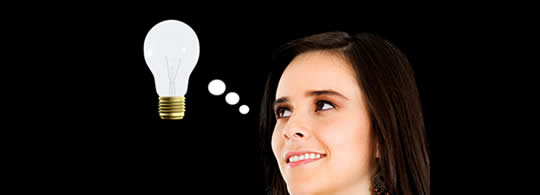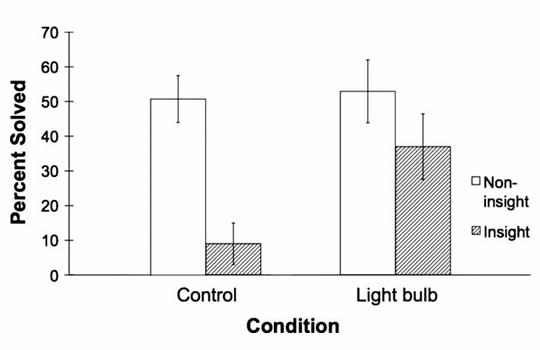25-Cent Creativity Booster
Want to boost your creativity by investing a quarter or so? Buy a lightbulb. Not the fancy LED, halogen, or compact fluorescent variety – just the old-fashioned, cheap incandescent kind that come in four-packs for a buck or so. Skeptical? Read on…
As long as I can remember, the image of a light bulb has been a symbol of creative thought. Park a cartoon lightbulb over a cartoon scientist, and just about everyone will know the scientist just had a great insight. In a rather remarkable example of life imitating art, research at Tufts University has found that working next to a lightbulb actually increases creativity.
Previous research has characterized insight as the product of internal processes, and has thus investigated the cognitive and motivational processes that immediately precede it. In this research, however, we investigate whether insight can be catalyzed by a cultural artifact, an external object imbued with learned meaning. Specifically, we exposed participants to an illuminating lightbulb – an iconic image of insight – prior to or during insight problem-solving. Across four studies, exposing participants to an illuminating lightbulb primed concepts associated with achieving an insight, and enhanced insight problem-solving in three different domains (spatial, verbal, and mathematical), but did not enhance general (non-insight) problem-solving. [From the Journal of Experimental Social Psychology – Shedding light on insight: Priming bright ideas by Michael Slepian et al.]
The interesting aspect of this study is that it has nothing to do with illumination and everything to do with our cultural notion that lightbulbs are related to creativity. Priming the subjects with this iconic image actually boosted their problem solving skills when the problem required a creative solution. In one test, subjects exposed to a light bulb solved “insight” problems nearly 40% of the time compared with 10% in a no-bulb control group.
One wonders if a light bulb poster would have done just as well. Or perhaps a picture of Einstein. Or both.
Regardless, if, like me, you see a light bulb over someone’s head in an illustration and immediately think “bright idea,” fire up YOUR OWN light bulb when you want to work on a difficult problem. You’ll likely find the solution more quickly. And skip the fancy & expensive LED, halogen, and compact fluorescent bulbs – your brain has been programmed to associate creativity with old-fashioned incandescent bulbs that now cost as little as a quarter.
Image via Shutterstock


